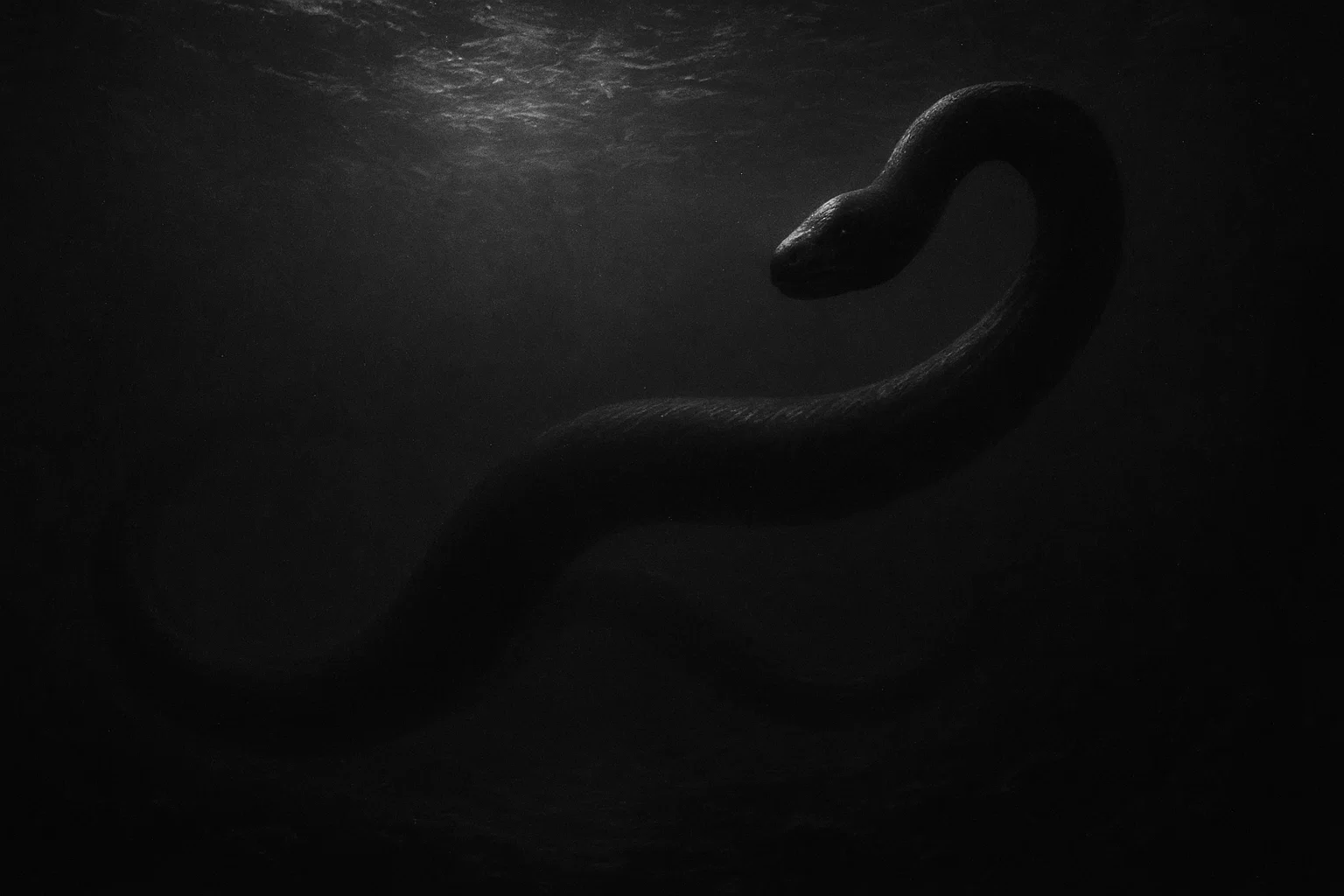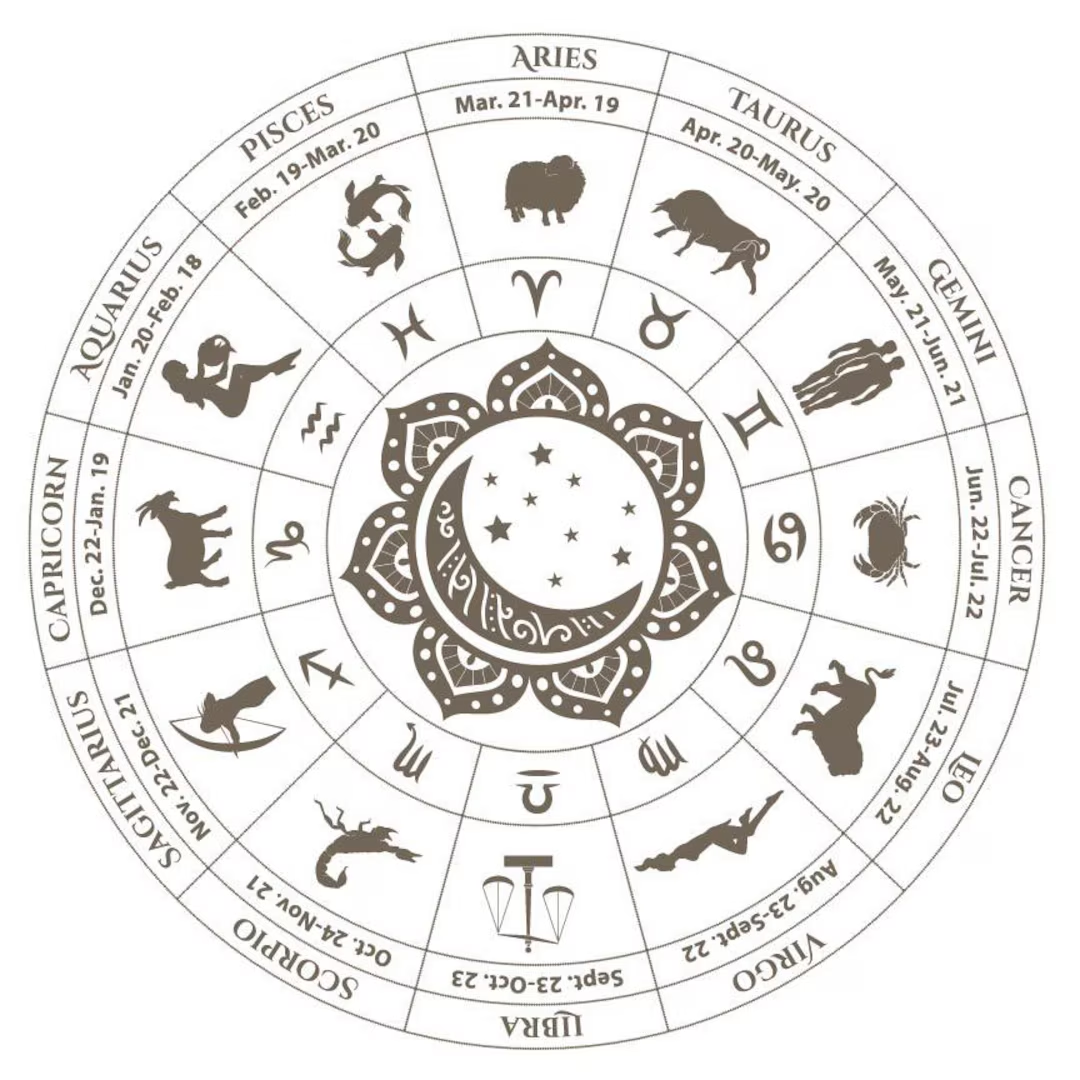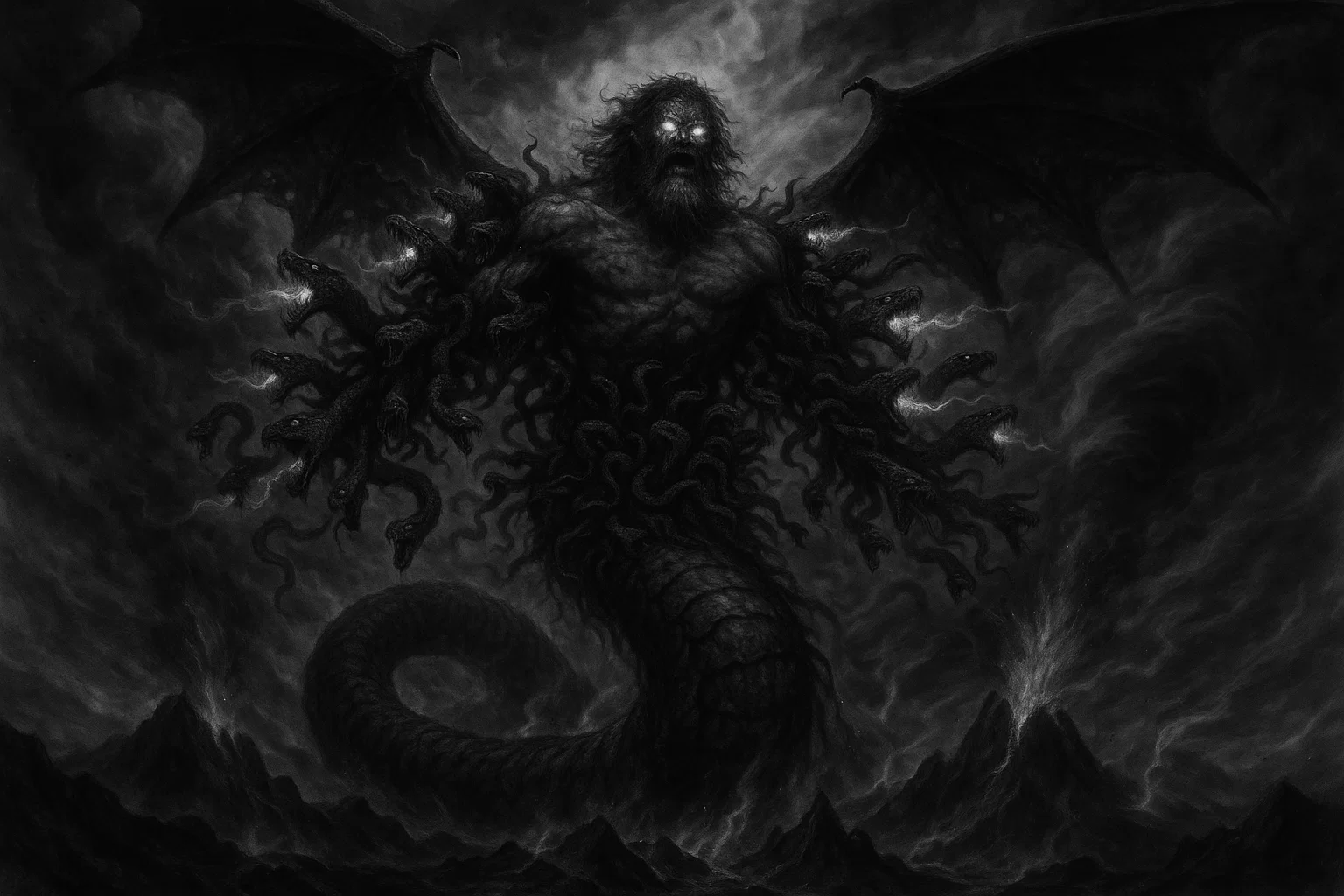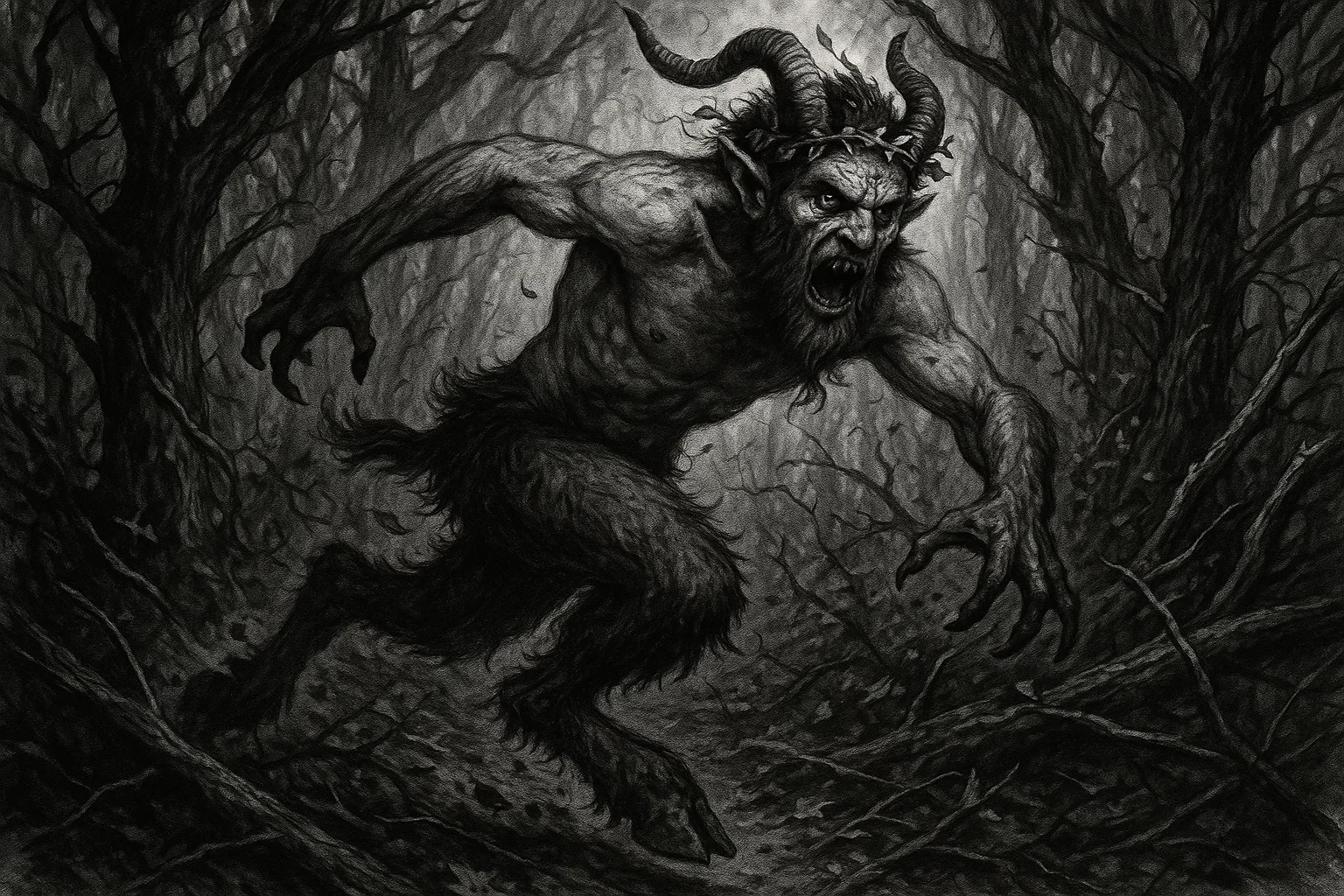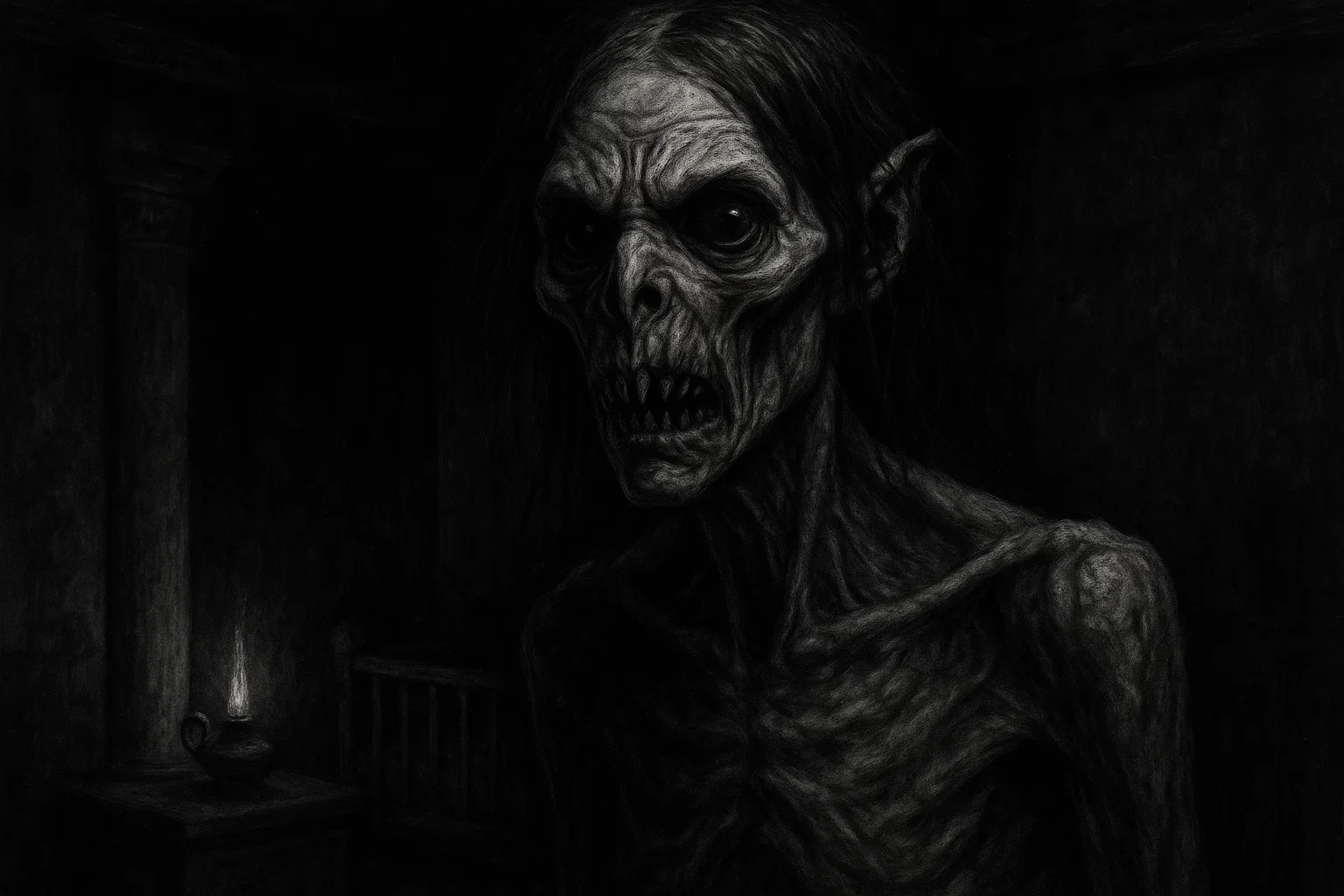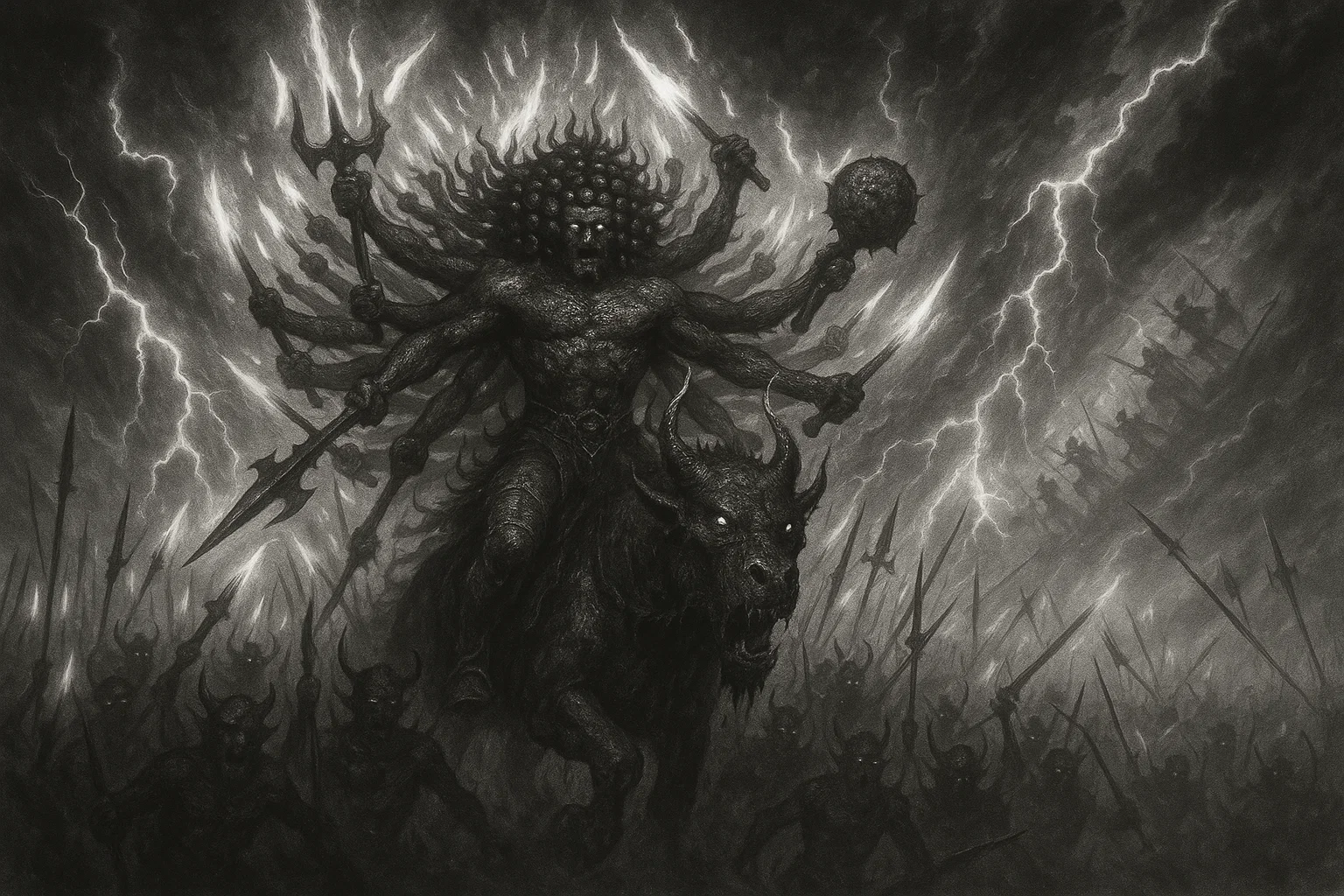The Lukwata is a mysterious water cryptid that is often mentioned in the folklore of the African Great Lakes region, particularly among the Baganda people near Lake Victoria.
Described as a terrifying aquatic serpent or lake monster, the creature’s name in Luganda translates to “sea serpent” or literally, “to seize.”
Traditional accounts portray the Lukwata as a large, predatory beast notorious for attacking fishing canoes, and it is deeply intertwined with local spiritual and cultural practices, which sometimes include sacrificial offerings.
Summary
Overview
| Attribute | Details |
| Name | Lukwata |
| Aliases | Sea Serpent; occasionally confused with the Lau or Dingonek |
| Threat Level | Aggressive and predatory; known to attack people and boats |
| Habitat | Lake Victoria, Lake No (Sudan), Lake Tanganyika, and surrounding East African rivers and swamps |
| Physical Traits | Long neck; small, rounded head; serpent-like or dolphin-like body; dark, smooth skin. Size is most commonly estimated between 20–30 feet, though some accounts suggest up to 100 feet (30 m). |
| Reported Sightings | Lake Victoria (Uganda/Tanzania/Kenya), Lake No (Sudan) |
| First Documented Sighting | Folklore accounts documented by C. W. Hobley in 1913; specific modern sightings from 1900. |
| Species Classification | Unknown; speculative classifications include unknown Reptile, Mammal, or another unknown order. |
| Type | Aquatic (Lake Monster) |
| Behavior & Traits | Violent, bellowing roar, elusive. Revered by local tribes and associated with specific rituals. |
| Evidence | Eyewitness accounts (historical); strong cultural reverence and associated rituals. |
| Possible Explanations | Misidentified giant eels, large pythons, or a previously unknown marine mammal or reptile. |
| Status | Ongoing mystery; actively reported historically, but reports in Lake Victoria are rare in recent years. |
Who or What Is the Lukwata?
The Lukwata is a cryptid rooted in the ongoing legends of the African Great Lakes region, with its mythos primarily centered around the immense freshwater expanse of Lake Victoria.
This cryptid fits into the global category of lake monsters. However, it is uniquely contextualized within the traditions of East African tribes, including the Baganda, Ja Luo, Wasoga, and Kavirondo. The creature is not merely a ghost story; it is described as a tangible, terrifying presence that actively patrols the waters and poses a direct, physical threat to local fishermen and their canoes.
Historically, the native relationship with the Lukwata was often a blend of extreme fear and spiritual reverence. The creature was sometimes viewed as being connected to powerful water deities or malevolent spirits, necessitating appeasement.
This spiritual significance led to ritual practices, such as the presentation of burnt offerings of valuable livestock, including sheep and cattle, to calm the beast and ensure safe passage on the lake.
The belief that pieces of the Lukwata held magical properties further highlights its deep cultural importance, establishing it as a uniquely potent element of local African folklore.
Your Personalized, Hyper Accurate Moon & Astrology Reading
Limited time offer: Get your FREE, fully personalized Moon & Astrology Reading that takes astrology to a whole new level. Discover the secret depths of your personality, relationships, and true purpose in life.
What Does the Lukwata Look Like?
Descriptions of the Lukwata, while exhibiting minor variations, generally paint a clear picture of a large, snake-like aquatic creature. The majority of accounts estimate the animal’s length at 20-30 feet (6–9 meters), making it a formidable size, comparable to a small bus. However, a few accounts have dramatically exaggerated its scale, claiming it could reach up to 100 feet (30 meters)!
The most defining features are its long, visible neck and its relatively small, rounded head. Its skin is consistently described as dark and smooth, often prompting comparisons to a dolphin, a whale, or a large snake.
Its overall body structure is defined as serpent-like or dolphin-like, with most witnesses failing to observe any visible flippers. The distinct morphology—the long neck terminating in a small head—has led many to compare the Lukwata’s appearance to that of a Plesiosaur, a long-extinct marine reptile.
Crucially, the Lukwata is noted for its ability to produce loud, bellowing roars. This feature strongly distinguishes it from silent reptiles such as crocodiles and turtles.
You May Also Like: Tahoe Tessie: The Mysterious Lake Monster of the Sierra Nevada
Habitat
The Lukwata’s historical heartland is the massive Lake Victoria, the largest lake in Africa, which spans the borders of Uganda, Tanzania, and Kenya. The creature’s folklore is integral to the culture of the people residing on both the east and west shores of this immense freshwater body.
Sightings are not restricted to the deep center of the lake; many encounters occur near shorelines, river mouths, and within the extensive swamps that fringe the area.
Furthermore, similar sightings or legends associated with the name Lukwata have been reported far beyond Lake Victoria. Reports have placed the creature, or a very similar entity, in the swampy regions surrounding Lake No in South Sudan and possibly in Lake Tanganyika, another of the vast East African Rift lakes.
This suggests that the cryptid, if a real species, may be distributed across several tropical freshwater ecosystems in the African Great Lakes region, environments characterized by varied depths, warm climates, and extensive marshlands.
Due to a pronounced decline in reports from Lake Victoria in recent years, some cryptozoologists speculate that the species may now be extremely rare or even extinct in that habitat.
Lukwata Sightings
While the Lukwata has long existed in local African folklore, its most prominent modern sightings were documented by European travelers and colonial officials in the late 19th and early 20th centuries.
| Date | Place | Witness Details | Description | Reliability |
| 1900 | Lake Victoria | Sir Clement Hill (British Colonial Official) | A long-necked animal rose from the water near his steamboat and attempted to grab a man from the deck; Hill was certain it was not a crocodile. | High: Credible high-ranking official, immediate report. |
| c. 1913 | Lake Victoria Region | C. W. Hobley (British Colonial Administrator) | Reported that people on both sides of the lake consistently shared stories of the Lukwata attacking fishing canoes. | High: Corroboration of widespread, consistent folklore. |
| 1937 | Lake No Swamps (Sudan) | Captain W. Hichens (Reporting on Local Accounts) | Local accounts describing a great serpent up to 100 feet long with deadly eyes and monstrous bristling tentacles. | Medium: Report of local accounts; details possibly sensationalized. |
| 1959 | Shore of Lake Victoria | T.E. Cox and his wife | Observed a long-necked animal near the shoreline; the creature swam with a distinct undulating, serpent-like movement. | Medium: Direct observation by multiple witnesses. |
Awaken XT is unlike anything you’ve ever tried before…
…it’s based off a closely guarded formula that’s said to be able to supercharge your pineal gland and help you access your untapped inner power. With it’s unique blend of extremely hard to source ingredients, Awaken XT helps support the healthy functioning of your pineal gland, as well as your other organs in your body.
Sir Clement Hill’s Encounter (Lake Victoria, 1900)
Perhaps the most sensational and highly regarded incident occurred around 1900, involving Sir Clement Hill, who was traveling on a steamboat on Lake Victoria.
As the vessel was underway, a large, long-necked animal suddenly appeared near the boat. In a terrifying display, the creature lunged out of the water toward the deck, attempting to seize a man who was standing there. The potential victim was reportedly saved only by ducking away just in time.
Sir Clement Hill, a European of high standing, testified to the attack’s aggressive nature and was emphatic that the beast was not a known animal, such as a crocodile.
You May Also Like: What Is the Agogwe? The Mysterious Hairy Dwarf of East Africa
T.E. Cox and Wife (Lake Victoria, 1959)
More than half a century after the Hill incident, a sighting by T.E. Cox and his wife near the shore of Lake Victoria was documented in 1959.
The couple observed a long-necked animal swimming, noting its distinctive method of propulsion: a clear, undulating movement. This specific detail has been seized upon by researchers (as the side-to-side undulation is characteristic of snake-like or eel-like animals), providing a more specific visual description of the creature’s swimming action than previous reports.
Evidence & Investigations
The evidence supporting the existence of the Lukwata is largely testimonial and cultural, with a noticeable lack of hard scientific data. The primary body of evidence consists of extensive eyewitness accounts and the creature’s deep integration into the folklore of the peoples of the African Great Lakes.
The value of the evidence often rests on the credibility of the historical observers. Accounts from high-ranking colonial figures like Sir Clement Hill and C. W. Hobley were crucial, as their documentation of local tales and personal sightings was generally viewed as objective at the time.
Their reports serve as a powerful historical record that an animal fitting Lukwata’s description was actively reported. Furthermore, the creature’s status as a subject of ritual sacrifice across multiple, distinct tribes (Baganda, Ja Luo) suggests a widespread, consistent stimulus that generated this cultural reverence.
However, the Lukwata has never been the subject of a concerted, large-scale cryptozoological investigation comparable to those conducted at Loch Ness. There are no definitive, authenticated photographs, footprints, or carcasses.
The strongest piece of negative evidence is the absence of DNA traces or physical remains in the modern era. Given the Lukwata’s alleged size (20–30 feet), a stable population in Lake Victoria would be expected to leave behind some biological evidence, such as eDNA or a beach-washed carcass.
The apparent rarity or complete absence of recent sightings in Lake Victoria suggests that, if the creature were a unique species, it may have become functionally extinct within that specific ecosystem.
You May Also Like: Dingonek: The Mysetrious Predator That Terrified East Africa
Theories
The theories proposed to explain the Lukwata seek to rationalize persistent reports in the absence of strong scientific evidence.
The Unknown Aquatic Mammal Theory
One compelling biological hypothesis suggests the Lukwata could be an unknown species of aquatic mammal, specifically a new type of cetacean (such as a dolphin or small whale) or a fully aquatic pinniped (such as a seal or seal-like creature).
This theory is supported by several key details: the creature’s dark, smooth skin and dolphin-like body are more characteristic of mammals than reptiles. Most importantly, the Lukwata is reported to emit a bellowing roar. Sounds of this nature are frequently produced by marine mammals for communication. In contrast, most large reptiles are silent or produce hissing sounds.
A mammal of this type, highly specialized for a deep-water freshwater existence, could also explain its evasiveness and infrequent appearances.
Misidentification of Giant Eels or Pythons
The most rational and widely accepted scientific explanation is that the Lukwata is a severe misidentification of known, but unusually large, local fauna.
The two most common candidates are oversized European eels or massive African pythons. Eels can grow to significant lengths, and their undulating, snake-like movement closely matches the 1959 Cox sighting.
Similarly, large snakes, such as the African rock python, are highly at home in water and, when swimming, could present a long, dark, head-and-neck profile to a distant observer.
Colonial administrator C. W. Hobley himself noted his uncertainty, stating that the stories could plausibly have originated in large pythons or in an unknown animal.
The Surviving Prehistoric Reptile Theory
The creature’s most famous feature—the long neck and small head—is a classic parallel to extinct marine reptiles, prompting the popular cryptozoological theory that the Lukwata is a relict population of a Plesiosaur or a related lineage.
The immense volume of Lake Victoria provides a potential habitat. However, its relatively young geological age makes the existence of a trapped ancient species highly improbable. Furthermore, the creature’s alleged bellowing roar is not typically associated with reptiles.
Proponents, however, maintain that the sheer size and distinct neck profile are too unique to be a mere eel or python.
You May Also Like: What Is the Holawaka? The Ethiopian Spirit Bird That Doomed Humanity
Comparison with Other Similar Cryptids
| Cryptid Name | Origin Location | Primary Description | Type of Monster |
| Nessie | Loch Ness, Scotland | Large, long-necked aquatic creature, often seen with one or more humps. | Lake Monster |
| Ogopogo | Okanagan Lake, Canada | Serpent-like body, often described as having multiple humps and a goat-like head. | Lake Monster |
| Champ | Lake Champlain, USA/Canada | Marine reptile-like appearance with a long neck and small, dog-like or dinosaur-like head. | Lake Monster |
| Mokele-Mbembe | Congo River Basin, Africa | Huge, brown-grey quadruped, long-necked, and resembling a sauropod dinosaur. | River/Swamp Monster |
| The Lau | Lake Victoria region, Africa | Another massive serpent or eel-like creature; sometimes regionally confused with the Lukwata. | Lake Monster |
| Dingonek | Kenya/Tanzania, Africa | Furry, reptilian creature with leopard spots, a defensive single horn, and teeth like a walrus. | River/Swamp Monster |
| Pangwe | Lake Pangong, Tibet | Large, dark creature that surfaces to expel plumes of water; possibly a massive unknown fish or reptile. | Lake Monster |
| Issie | Lake Ikeda, Japan | A black-humped creature often associated with a marine mammal or unknown cetacean. | Lake Monster |
| Cadborosaurus | Cadboro Bay, British Columbia | Long-necked, camel-like head, and multiple vertical coils or humps along the body. | Sea Serpent/Marine Cryptid |
| Morag | Loch Morar, Scotland | Similar to Nessie, but smaller, darker in color, and often associated with malevolence. | Lake Monster |
Is the Lukwata Real?
The Lukwata remains one of Africa’s most fascinating and persistent cryptozoological mysteries.
On the one hand, the creature is supported by centuries of local folklore, backed by several detailed, frightening encounters documented by reliable external witnesses in the early 20th century. These reports consistently describe an animal too large, too loud, and too aggressive to be easily dismissed as a mundane fish or hippo.
On the other side, modern science offers no definitive confirmation. The immense size and age of Lake Victoria are often cited as potential reasons for its elusiveness. However, the lack of any supporting physical evidence—no carcasses, no eDNA, no high-quality photographs—is a significant hurdle.
Ultimately, the Lukwata is most likely either a deeply ingrained cultural interpretation of known giant fauna (like a colossal python or eel) or, far less likely, a unique, highly rare species of aquatic life yet to be formally described.
Its legend continues to thrive, reflecting both the local inhabitants’ respect for the powerful, unexplored depths of their waters and the world’s enduring hope for new discoveries.

